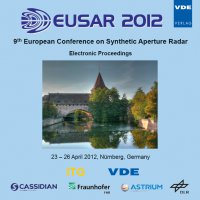Real-time Airborne SAR Imaging. Motion compensation and Autofocus issues
Konferenz: EUSAR 2012 - 9th European Conference on Synthetic Aperture Radar
23.04.2012 - 26.04.2012 in Nuremberg, Germany
Tagungsband: EUSAR 2012
Seiten: 4Sprache: EnglischTyp: PDF
Persönliche VDE-Mitglieder erhalten auf diesen Artikel 10% Rabatt
Autoren:
Cantalloube, Hubert M. J. (Office National d’Études et Recherches Aérospatiales, Chemin de la Hunière 91120 Palaiseau, France)
Nahum, Carole E. (Direction Générale de l’Armement, 5 rue des Mathurins 92221 Bagneux, France)
Inhalt:
The ? - k SAR algorithm used for processing the RAMSES/Sethi airborne radar signals was recently experimented on massively parallel graphic processor. It showed the capability to process a full resolution image (10 cm in both range and azimuth) at about 1/2 the acquisition rate on a single Nvidia M2050 card. Thus the possibility to achieve a SAR processing rate above the acquisition rate should be possible on a reasonable multi-card system. However, this would not be enough to effectively achieve the producing an effectively focused image as soon as it is acquired. Indeed, unlike the satellite case, the motion compensation is highly critical for airborne SAR, and the effective trajectory may differ significantly from the planed one. Furthermore, the present SAR processor assumes the knowledge of the full acquisition trajectory before choosing an optimal nominal trajectory, computing the motion compensation for the whole acquisition and then only starting the signal processing. Here are detailed the modifications in the processing chain to be done for having the real-time capability, this requires use a fixed nominal trajectory (from flight planning), widening the mocomp capabilities to cope with the increased trajectory deviation, compute the motion compensation with raw trajectory on-the-fly, prepare the autofocus during processing, perform autofocus from navigation system improved trajectory and eventually refocus the image.


